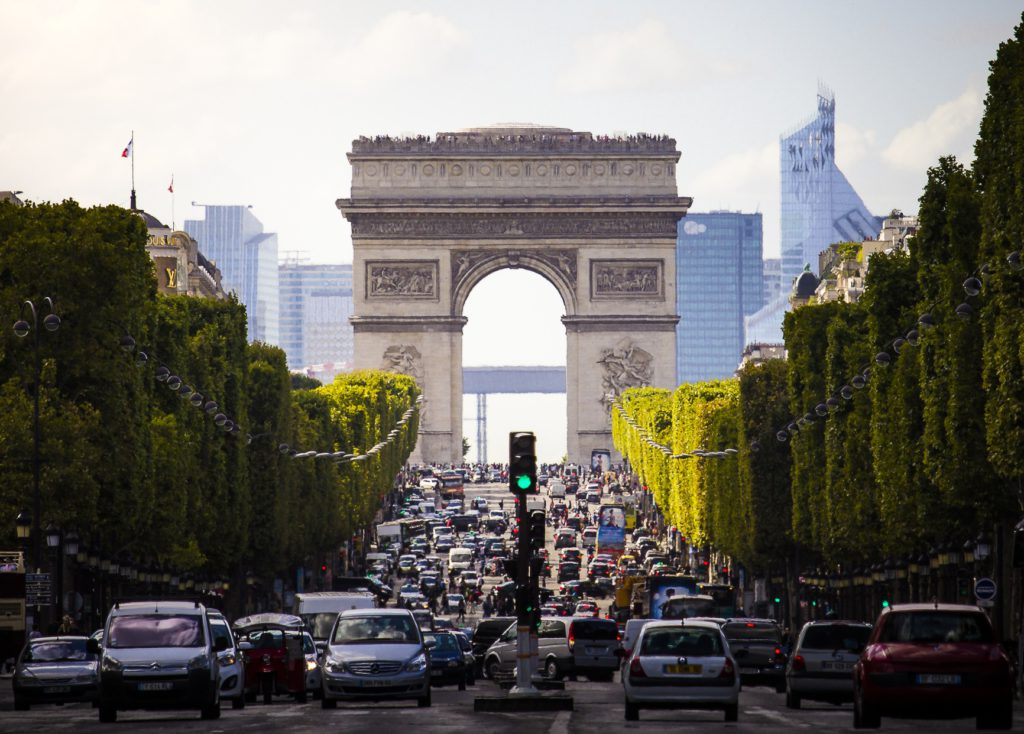Paris introduces 30kph speed limit as disincentive to drivers
02 September 2021

Paris has introduced a 30kph speed limit across most of the city in an effort to improve safety and reduce noise pollution from vehicles.
The new limits apply to all streets except the ring road (the Péripherique), the Boulevards des Maréchaux and a few others. The Champs-Elysées, for example, will retain its 50kph speed limit. The decision follows a consultation on the subject at the end of last year. A total of 5,736 people gave their opinion, including predominantly Paris residents.
Looking at consultation results by location, while 59% of Parisians favoured the reduction in the speed limit, just 36% of those living in Ile-de-France were happy with the proposals. Living on the outskirts, these residents are likely to see more of an impact than those in the congested city.
Speaking to the Financial Times in July, David Belliard, deputy mayor of Paris and a Green Party member, said the move would be good for both safety and the environment. ‘The challenge is to cut the presence of cars, their speed, and their grip on the city to give space to other users,’ he added. ‘We reckon that it will cut the noise nuisance by three decibels or by half in terms of what people perceive. It is really a big gain in terms of quality of life.’
Safety first
Cities around Europe are looking for ways to curb rising air-pollution levels. However, while some have banned diesel models, and others have introduced low-emission zones, the Paris speed limit enforcement is a profound statement of intent, affecting all models, including electrically-chargeable vehicles (EVs).
While the Parisian authorities have not confirmed the move is to combat air pollution, it may well have been a factor in the decision. Instead, it states that the reduction in the authorised speed makes it possible, on average, to reduce the number of accidents involving pedestrians by around 25%. The decrease in serious and fatal accidents is believed to be approximately 40%. It also allows the authorities to make more use of public spaces and improve the safety and uptake of light-mobility services such as bicycles and scooters.
‘By decreasing the speed from 50kph to 30kph, an average of 20-50cm of roadway is freed up, which can be reassigned to other uses: extension of pavements, revegetation, or creation of cycle paths,’ the authorities state.
Correct solution?
The introduction of the speed limit without vehicle exceptions is a move to reduce all forms of congestion in the city centre. By lowering the travelling speed, authorities hope they can convince Parisians and commuters to rely more on either public transport or bicycles.
Yet creating such disincentives is just one piece of the puzzle. At a conference in 2019, Christoph Erdmenger, from the ministry of transport of the German state of Baden-Württemberg, spoke about the ‘fourth industrial revolution.’ He claimed that if the state is serious about reducing CO2 emissions by 40% by 2030, there will have to be a goodbye to the ‘one-size-fits-all’ vehicle.
With more and more people moving into metropolitan areas, the ministry is working on concepts focusing on doubling public-transport capacity. ‘Every third vehicle will need to drive CO2-neutrally; we will need to walk and cycle more. To supply the needed space, the number of vehicles driving in a city must decrease by one third,’ he stated.
To achieve this, several disincentives must go hand-in-hand with incentives for people to switch away from their vehicles or reduce their commute. Disincentives would include cutting away space from vehicle lanes and transferring them to use by bicycles or pedestrians, closing off streets, adding extra charges for vehicles entering the region, amending traffic-light synchronisation and, as Paris has implemented, reducing speed limits.
Incentives would include creating improved offers around Park-and-Ride services, adding more public-transport capacity and reducing the costs of usage, providing safer spaces for pedestrians and cyclists, together with improved infrastructure for those commuting in this way.
‘The challenge is to slowly but steadily increase the pressure around disincentives while at the same time focusing as much effort on creating incentives for the mobility shift,’ states Dr Christof Engelskirchen, chief economist at Autovista Group. ‘There is no ‘one-solution-fits-all’ approach, but the idea of gradually applying a balanced mix of incentives and disincentives appears to be very effective.’
Cities such as Amsterdam have successfully pushed more commuters to take up cycling, while in London, authorities are increasing the number of cycle lanes and bike-hire locations. The decision to lower speed limits in Paris is aimed at helping to improve efforts on increasing infrastructure, but ideally, these incentives need to be in place before such a disincentive is created. Instead, the new limits could cause more congestion and therefore more noise and air pollution prior to an increase in cycle use.



